Transform your outdoor space into a winter wonderland with these creative winter container garden ideas and tips. From evergreen plants like pine and holly to vibrant winter-blooming flowers like pansies and violas, there are plenty of options to add color and life to your garden, even during the colder months.
Adding seasonal beauty to outdoor spaces during the winter months is not just about aesthetics; it’s about embracing the transformative power of nature in all its facets.
Winter, with its chilly embrace and the soft hush of falling snow, offers a unique canvas for creativity in landscaping. By designing and creating winter container gardens, we not only infuse life and vibrancy into our surroundings but also offer respite and solace in the midst of the cold season.
These gardens become living testimonials to the enduring spirit of life, showcasing the delicate artistry of nature even when the world seems to slumber. In a time when many outdoor spaces can feel barren, these winter container gardens stand as symbols of resilience and a reminder that beauty can be found in every season, even in the midst of winter’s chill.
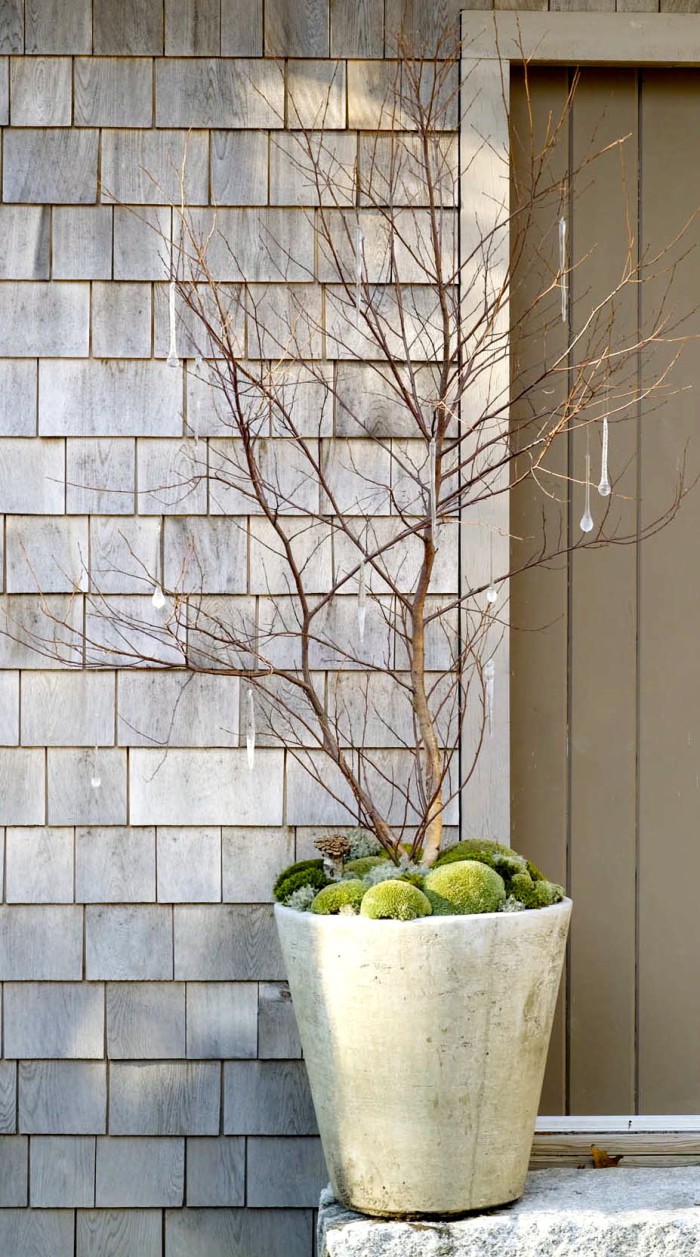
January – how to make outdoor winter planters
It’s January as I write this, and here in New England we are just starting to get winter. December has become unseasonably warm, and even though it is surely the result of worrisome climate shifts, In the moment, I appreciate the milder weather and the extension of my gardening season.
Hooray for planting bulbs after Thanksgiving and feeling my fingers while hanging garland in December! Also – cool temperatures are key to keeping winter adornments looking photo-fresh.
So while it may be 3 degrees out, I am calling all gardeners to get out and toss the crusty wreaths, drag your containers into the garage and thaw them out or better yet, bring out extra empty vessels and get started with crafting some winter container gardens.
Don’t let an opportunity to be creative in the garden with winter pots and planters pass you by.
Note: to all gardeners who ran out of time before the holidays and forgot to plant your winter composition, this is your 2nd chance! – As odd as this sounds, frozen soil or no soil at all, here are some easy ideas for transitioning your winter container planting in the middle of winter.
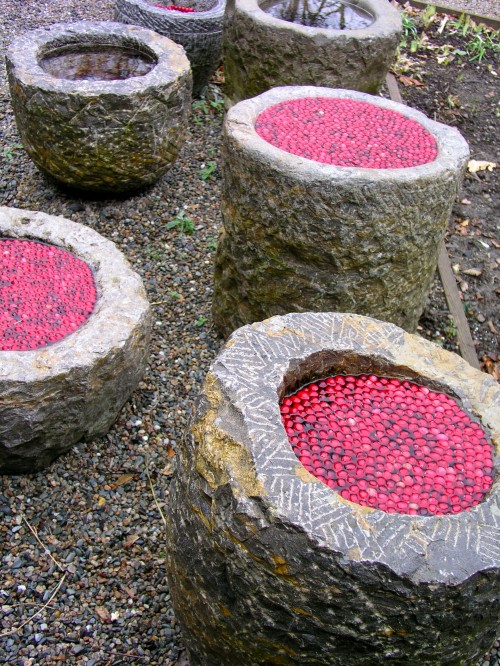
Selecting the Right Winter Garden Containers
Choosing the right containers for winter gardens is a pivotal first step in creating a captivating outdoor space. When it comes to winter container gardening, versatility is key. The ideal pots are vessels that you use year-round for other seasonal container garden displays.
If you live in a place that does not freeze – your options are wide open.
But if you have freezing temperatures, you need to make special considerations. For pots, prioritize materials that withstand freezing temperatures and ensure they have proper drainage to prevent waterlogging. The more water that is in your soil (in the pots), the more likely the trapped water will expand when frozen – potentially enough to damage or crack your pots.
When choosing materials, opt for durable options like ceramic, stone, resin, metal, or fiberglass, which can endure winter’s rigors. Plastic works, too – but it ages badly and never looks truly nice in a garden – so I avoid it as much as possible.
The size and style should harmonize with your overall design – whether it’s classic, rustic, or contemporary. The right container not only complements your vision but also contributes to the health and longevity of your winter garden.
If you can incorporate them, window boxes provide an opportunity to extend your garden’s reach vertically and are ideal for small spaces.
Hanging baskets can add a whimsical touch and are perfect for cascading plants (if you are in a place where live winter plants are an option).
(Note – New England is not that place – if you are in a similarly cold area – store the hangers away for spring.)
Choosing the Perfect Winter Container Plants (and other materials)
When it comes to selecting plants for your winter container garden, embracing a mix of evergreens, berries, and winter-blooming flowers can work wonders in transforming your outdoor space into a seasonal masterpiece.
Evergreens like conifers and boxwoods provide the backbone of your design, offering year-round structure and greenery. You can use them as living plants or just trim their boughs and arrange them as you would a floral display.
Keep in mind that if you opt for living plants in your container – make sure that your plant choices are hardy to at least your zone – but even better to 1-2 zones colder than yours. When plants are in the ground, their roots are protected from winter temperatures by the ground, but if they are container planted, the root ball is more susceptible to colder temps and you will find it to be less hardy.
To combat this – choose plants that will survive in zones considerably more extreme than you listed zone (so for example, I live in zone 6 – but in winter containers, I would not expect a plant to survive that is not hardy to at least zone 5 or 4).
outdoor winter planter ideas
24 Outdoor Winter Planter Ideas – Container Garden Display Tips And How to Make a Winter Planter:
1) Use evergreens to anchor your winter container gardens. The sturdy presence of evergreens creates a canvas or a backdrop on which you can add other elements.
Im not generally a fan of mixed containers when it comes to live plants in spring and summer containers – but it is much easier to pull off in the winter. You don’t have to match plants for care and upkeep in winter containers; the greens are generally not living and if they are, they don’t need anything special that other plants might need. (ie. just enough light and warmth to survive).
2) Berries, such as winterberry holly or cotoneaster, not only add a burst of color but also serve as a vital food source for wintering birds. Their vibrant reds and oranges contrast beautifully against the backdrop of evergreen foliage.
I scavenge the garden for other colored berries (here are some ideas for shrubs you can plant for beautiful winter berries (9 Garden Shrubs for Fall & Winter Florals)
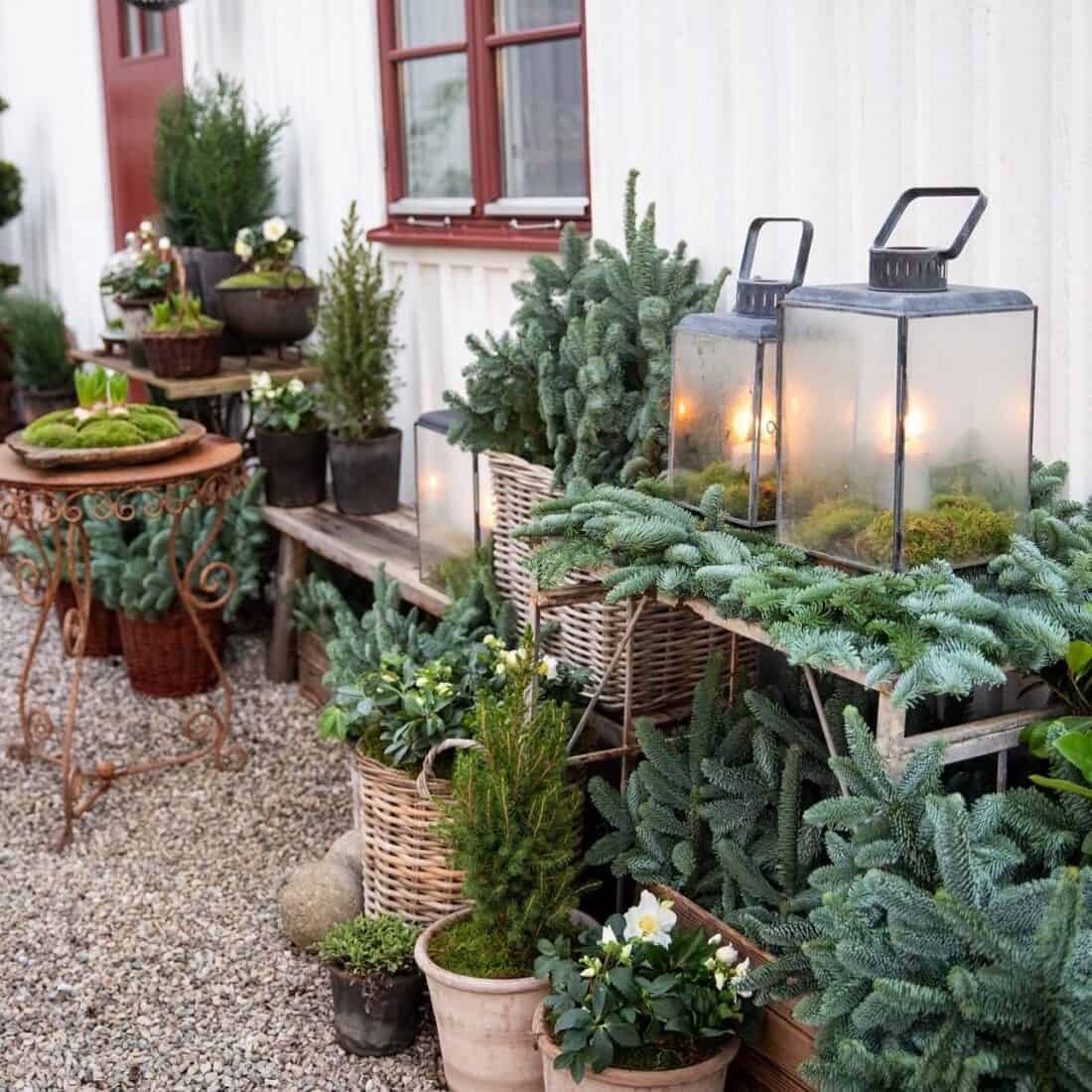
3) Incorporating winter-blooming flowers like pansies, cyclamen, or hellebores introduces a touch of life and charm to the chilly months.
These resilient bloomers thrive in cooler temperatures, gracing your containers with delicate petals and muted hues.
4) When designing your winter container garden, remember that contrasting textures, colors, and heights are key to achieving a visually appealing arrangement.
5) Combine the fine, feathery needles of evergreens with the bold and shiny foliage of winter berries. Play with varying heights, from tall evergreens anchoring the composition to low-growing flowers at the front.
This interplay of elements not only creates interest but also captures the essence of winter’s multifaceted beauty, ensuring your container garden shines even on the coldest days.
6) Shop your Grocery Store.
Materials and garden center availabilities may be limited. There are, however, great natural materials at the grocery store.
Artichokes, kumquats, and nuts look really interesting when enshrined in ice. I like to fill empty frost-friendly containers with cranberries and water.
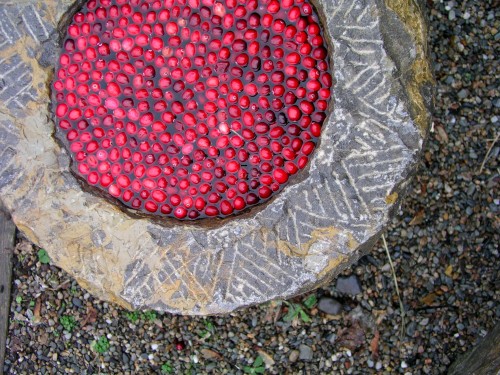
Ideas for Grocery store materials:
- Artichokes
- kumquats
- nuts
- pomegranates
- apples and pears
- citrus (oranges, lemons, pomelos, grapefruit)
- seeds and spices (you can use them as a textural coating on foam oranaments).
- cranberries
Look for color and texture. It is ok if it will freeze, the cold temps will help materials last longer.
7) Repurpose the vessel.
Think of all the other ways you can use your container. Bird feeder? Log holder? There is beauty in functionality.
What garden items can be repurposed? Topiary frames, obelisks and white lights can be used creatively.
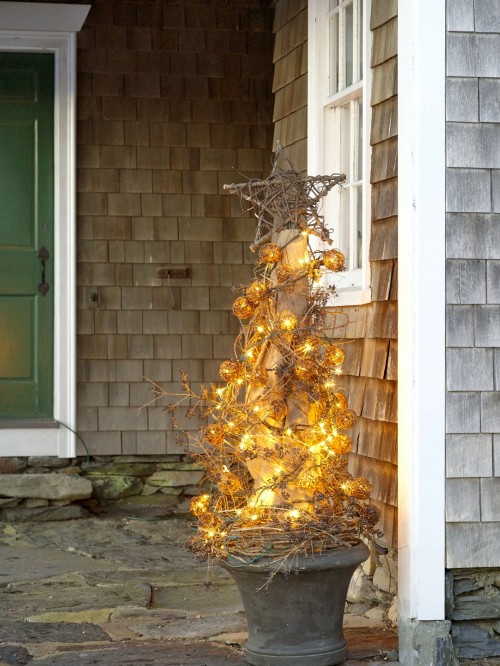
8) Display Nature – Everything you find in you garden has the potential to be converted in form and function into something beautiful.
9) A container is kinda like a frame. If your child draws a few scribbles and puts them on the fridge with a magnet, it looks very different than if you put the same scribbles in a beautiful frame.
The frame focuses our view and acts like an arrow that tells our brains to look closer and appreciate what is inside. If you think like this when constructing a winter container garden – you will find that it is easier to create something special.
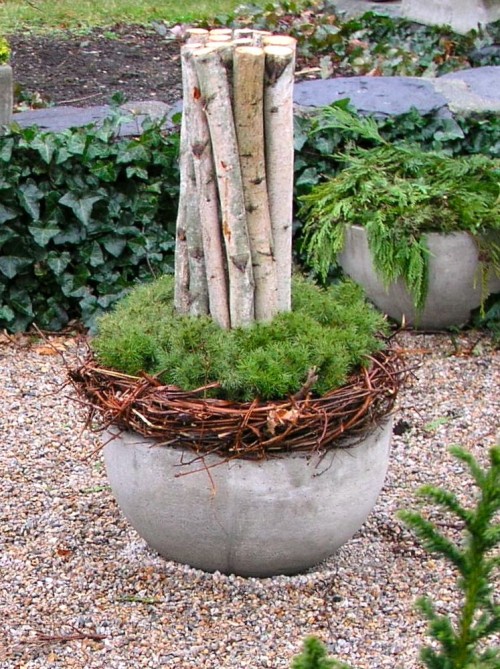
10) If your soil is frozen build an interesting composition on top.
11) If your winter greenery is frozen in the soil cut stems to the soil level and begin building.
12) Underplant a tree that you are overwintering in a container with mounds of soft moss. You don’t even have to take it out of its grow pot – just plant it inside the bigger pot. The extra soil will help insulate, and it will still be easy to remove in the spring when you find its permanent home.
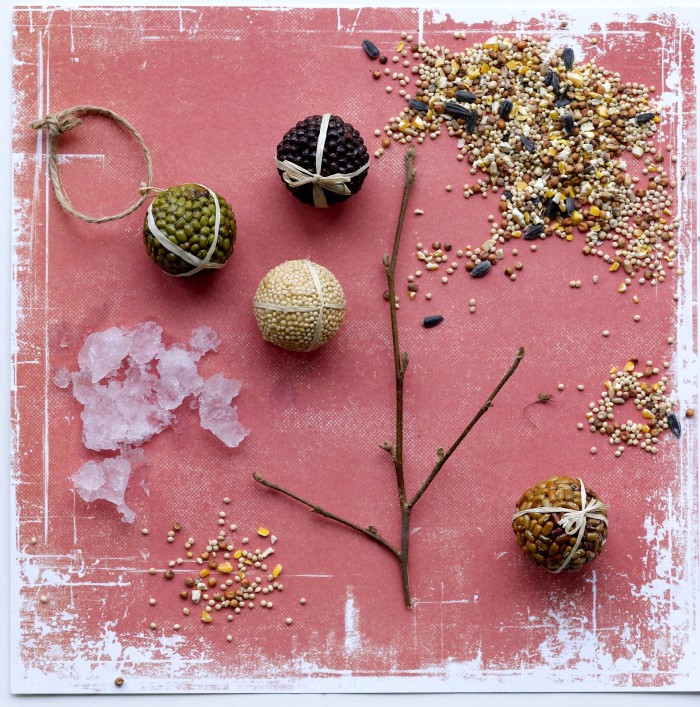
13) Display moss vignettes, collections of pinecones, and other cool treasures you find on daily walks.
14) Make a grapevine structure or snowball topiary (think croquembouche but with snow). Grapevine is easy to twist into shapes, and if you have a grapevine that you maintain – you know it needs heavy annual pruning – giving lots of materials to play with.
15) If you have garlands or wreaths that you hang during the winter – use some of the same natural materials in all of them so that they look cohesive.
16) If you are using containers – really use the containers.
They aren’t just a holder for plant material – make them part of the color scheme. Keep them in a singular or considered style, color, or materials palette. Make their style and arrangement as exciting as what you put in them.
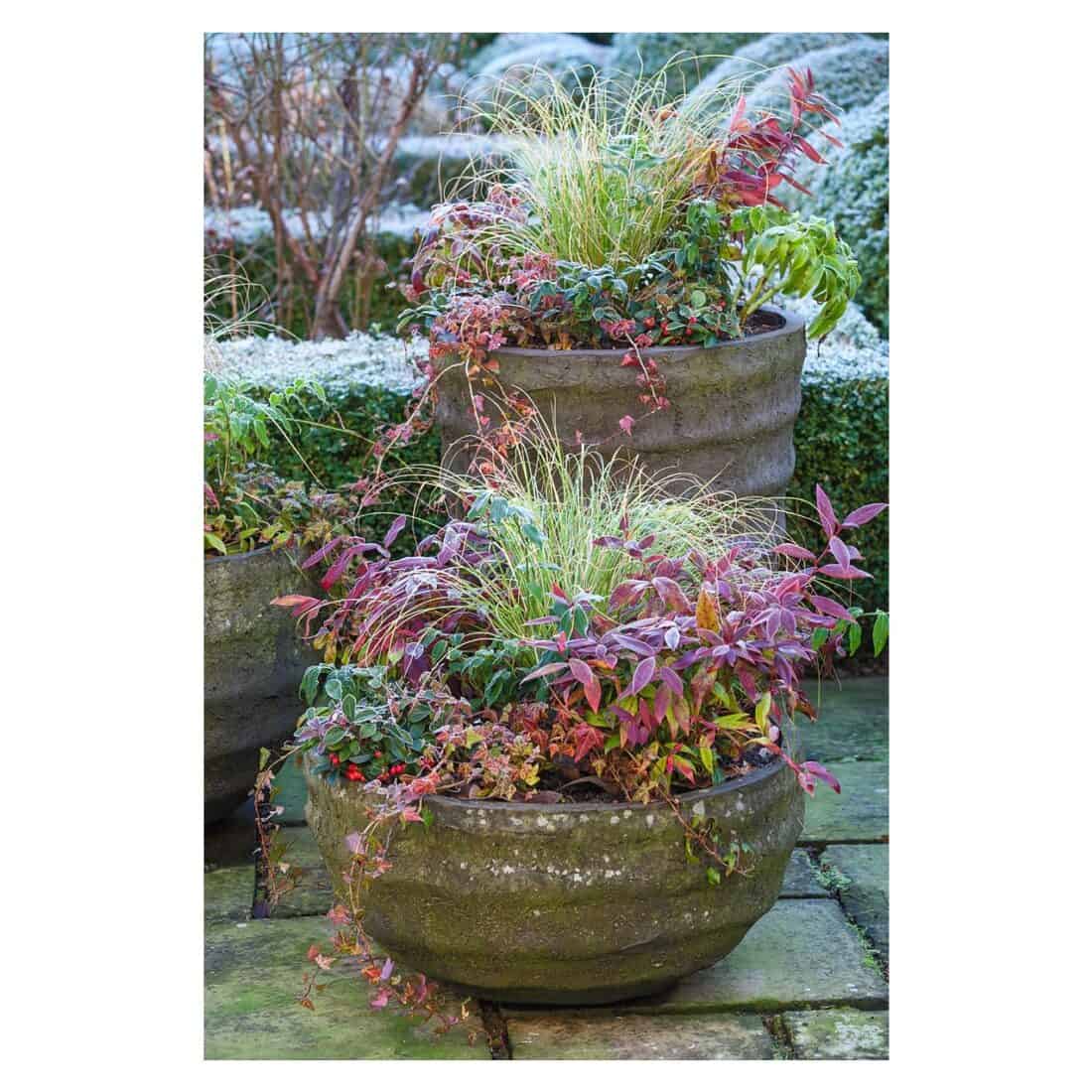
17) You don’t actually need to use containers. What about a filled burlap as a base (kind of like using oasis in floral arranging). Use it at the structure to build a container-less arrangement.
18) If your soil is already frozen, you can thaw it with a pot of hot water. But you will have to work fast if it is particularly cold so that it doesn’t re-freeze.
19) If you are sticking anything (like evergreen boughs or other florals), clean/trim the bottom 6-12 inches to make a clear stem. It will go into the soil better and deeper, giving you a good foundation of materials.
20) Everything is usable. If you have off-cuttings, gather them for a smaller pot. A simple container filled with something beautiful and combined with other containers that are also filled with pretty things is all beautiful together.
21) The texture of your materials is your main trick with winter containers. Your color schemes are typically limited, but texture can be more varied – so highlight it. Make sure you have as many different textures as possible in your planters.
22) Think about focal points. If you aren’t sure what the focal point is, close your eyes, reset your vision for just a second, re-open them, and see what you notice first. In winter plantings, it will often be things that are red (or colorful), or that have mass. (Like groups of pinecones or some other dense looking object like an ornament).
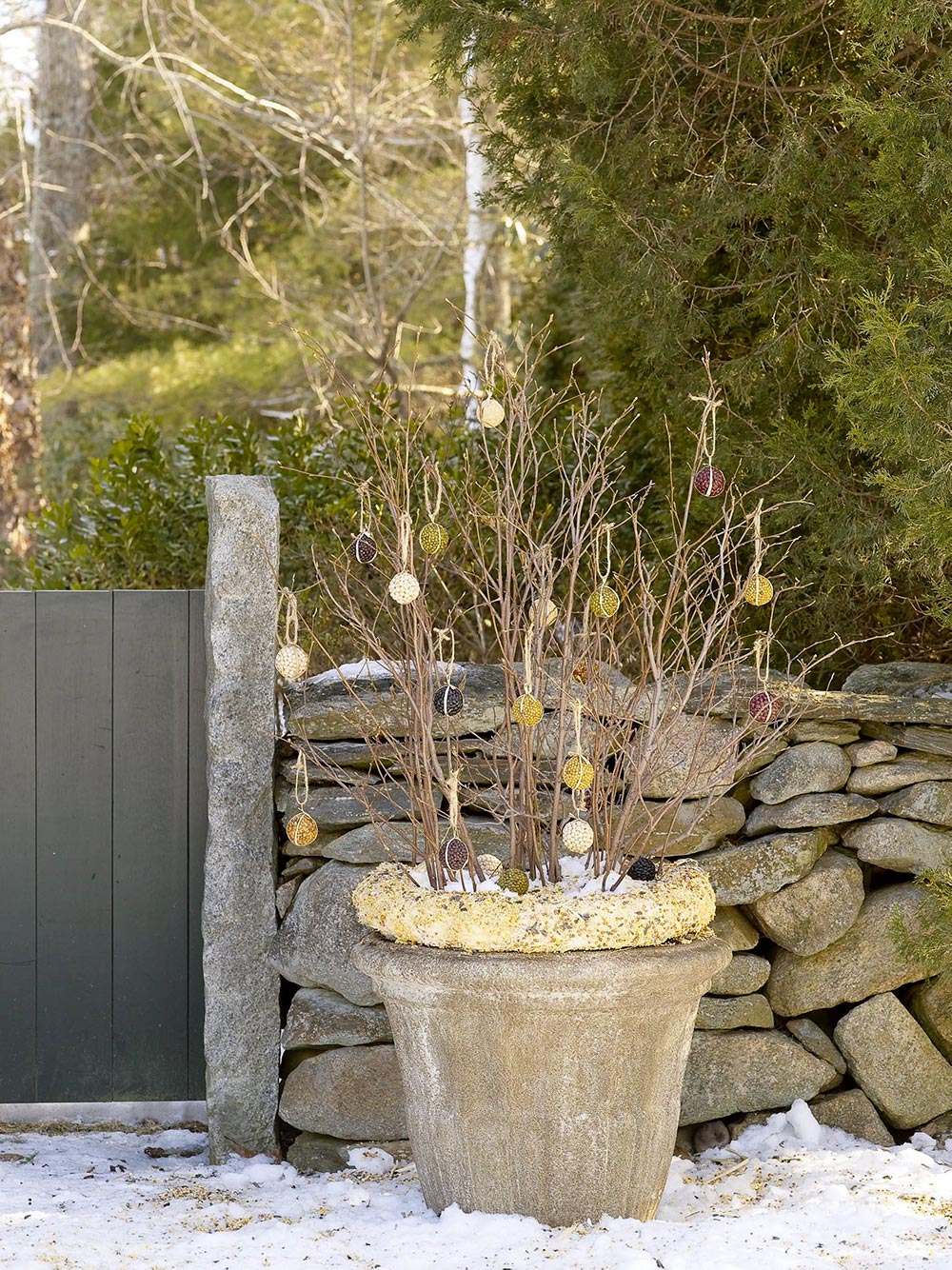
23) Finish with moss. It covers a multitude of issues.
I use supermoss (unpreserved) – it is not artificial, and I opt for dried vs preserved. (so when it all goes into the compost heap or gets worked into the ground, I am not polluting my soil.)
You can buy 5 lb boxes that will last a while (this is what I purchase – it doesn’t go bad) – or smaller bags if you are just doing one or two pots.
24) Add Accessories – They bring the garden to life.
Other ideas for design elements that can elevate your winter planters:
- Lanterns
- Wreaths (used as a textural element in a pot)
- Fabric – Burlap or canvas can cover shapes an help to create contrast.
- Lights
- Branches
- Ornaments (bird seed will also feed and draw birds)
- Use outdoor benches and furniture to artfully gather your containers into a collection.
original post written by Roanne Robbins
My name is Mary Starnes and I am the owner of The Windowbox Gardener in Indianapolis. Check out my facebook page at http://www.facebook.com/windowboxgardener. I have many photos from all seasons of container gardening. Please let me know if I can help or share. I am a long time reader of Studio g. Thanks
Mary
The Windowbox Gardener
I am looking forward to more of these “Snippets.” Living in Michigan I stare out my window planning what a girl will rearrange come Spring. Thanks for sharing these ideas of what can be done right now, without moving a lot of dirt.